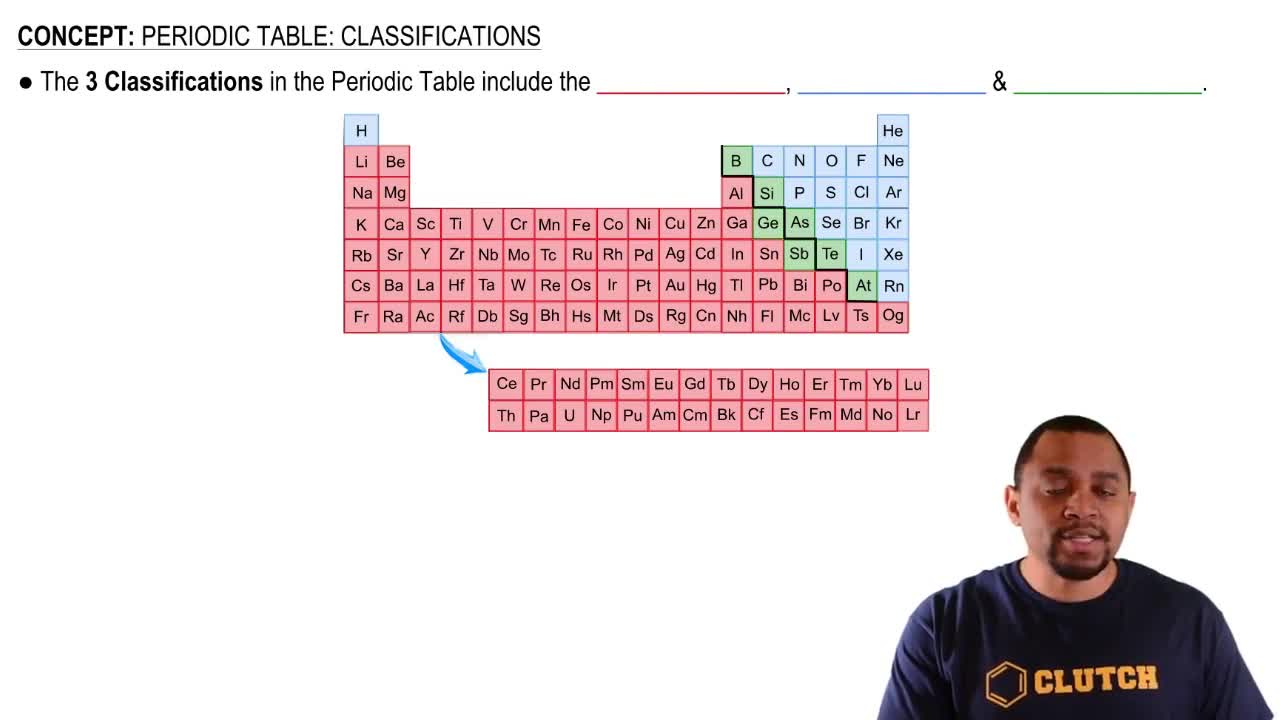Provide the following:
c. the atomic mass and symbol of the alkaline earth metal in Period 3
d. the atomic mass and symbol of the halogen with the fewest electrons
 Verified step by step guidance
Verified step by step guidance Verified video answer for a similar problem:
Verified video answer for a similar problem:



 4:01m
4:01mMaster Periodic Table: Symbols Concept with a bite sized video explanation from Jules
Start learning